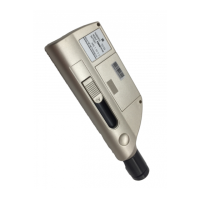
Do you have a question about the Beijing TIME 5100 and is the answer not in the manual?
| Brand | Beijing |
|---|---|
| Model | TIME 5100 |
| Category | Test Equipment |
| Language | English |
Lists the key functional features of the hardness tester.
Explains the fundamental scientific principle behind the Leeb hardness testing method.
Provides detailed technical specifications, including impact device and measurement parameters.
Details the accuracy and repeatability based on standard test blocks.
Specifies the overall measuring capability of the device.
Pre-test procedures and sample preparation guidelines.
Specific steps for preparing the surface of the test sample.
Step-by-step guide on how to perform the hardness test.
Procedure for conducting the actual hardness measurement.
Detailed steps for performing measurements and reading results.
Configuring test parameters such as impact direction, material, and limits.
Procedure for calibrating the hardness tester using standard test blocks.
